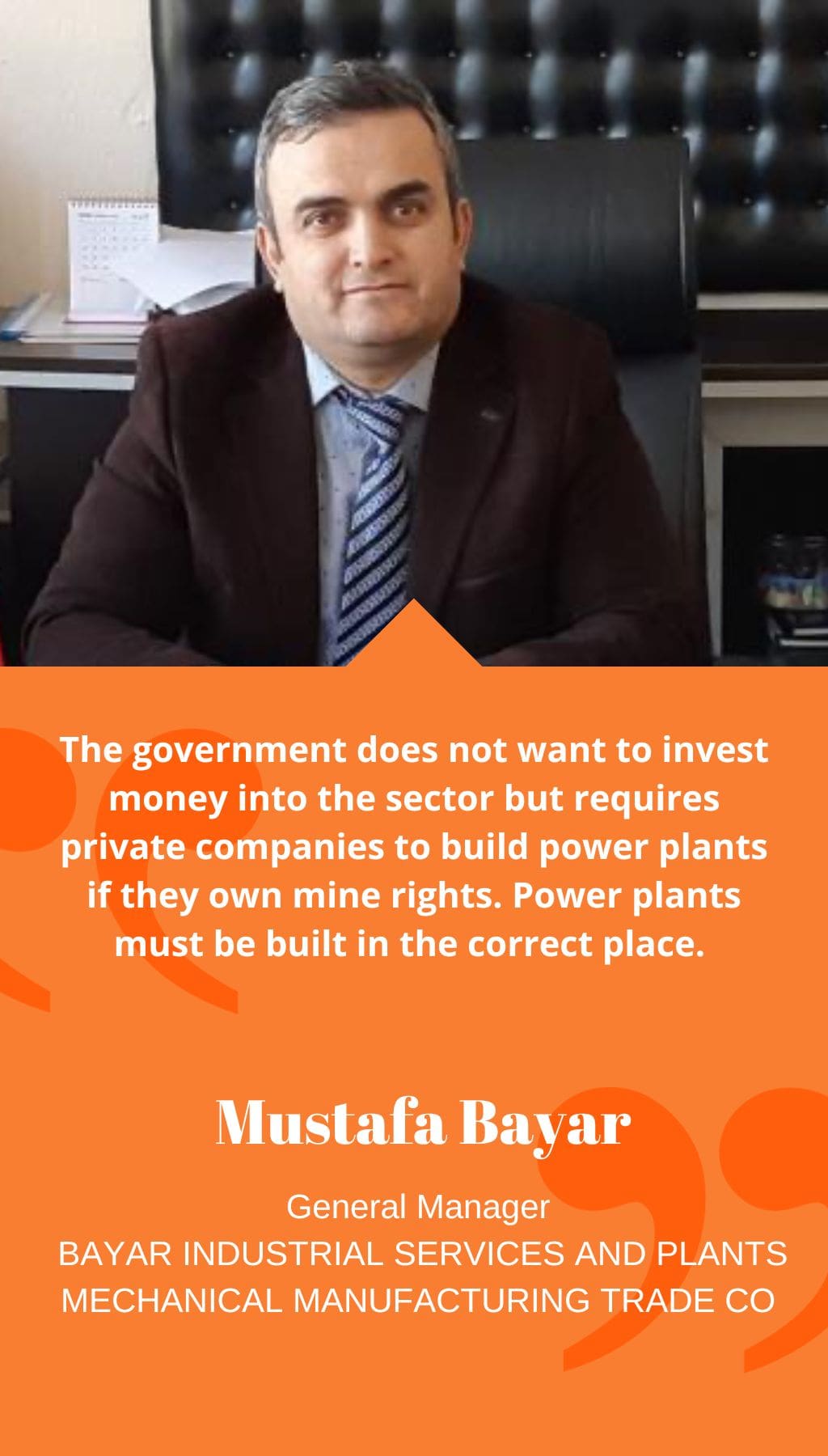
- Turkey | 9 August 2018

Can you describe Bayar’s role in the mining sector?
Bayar is primarily involved in the mining and energy sectors. Its mining business is divided into two parts: exploration and industrial minerals ore processing and enrichment. They offer direct bore hole measurements for drilling and exploration, which is a unique service only a few companies can provide. Bayar also has commercial business activities, representing various companies in Turkey, including China Coal Construction Group (CCCG).
How does Bayar collaborate with the MTA?
Bayar has been working with the MTA for the past two years, conducting measurements all over Turkey. The MTA aims to drill an additional 1 million meters each year, which is a significant increase compared to the 1.5 million meters drilled in the past 70 to 80 years. Bayar has drilled 800,000 meters for the MTA, discovering new deposits of uranium in the Thrace region and more than one billion mt of lignite coal in the Konya and Karaman provinces, as well as the same amount in Thrace near Bulgaria and Greece. Bayar has also discovered 250 million mt of coal in the Eskişehir province.
Can you describe Bayar’s activities and services in the mining sector?
In the mining sector, we primarily work in the mining and energy sectors, with our mining business divided into exploration and industrial minerals ore processing and enrichment. We cover the drilling and exploration phase, including all geophysical exploration, and have commercial business activities where we represent various companies in Turkey, including UK companies, and are the exclusive agent of China Coal Construction Group (CCCG).
How is Bayar working with the MTA?
In the last two years, we have been working with the MTA and taking measurements all over Turkey. This is highly significant given that in the preceding 70 to 80 years, the MTA only drilled 1.5 million meters. So far, we have carried out 800,000 meters of drilling for the MTA in the last two years all over Turkey. When we have been making surveys for coal, we have made new discoveries, such as for uranium in the Thrace region. Also, according to our results, there are more than one billion mt of lignite coal in the Konya and Karaman provinces, and the same amount in Thrace near Bulgaria and Greece. Additionally, we have found 250 million mt of coal in the Eskişehir province.
How successful is Turkey in increasing its coal production?
Clean coal technologies should be employed to reduce public opposition to coal projects in local areas. Also, the government does not have thorough planning in place to increase production but rather has a privatization policy for mine rights and private companies to then sell coal to the Electricity Generation Company (EÜAŞ). The government does not want to invest money into the sector but requires private companies to build power plants if they own mine rights. Power plants must be built in the correct place. For example, there is one being built in Çayırhan where Ciner Holding already has a power plant, but there is no coal left. Bayar is working in Zonguldak for the Turkish Hard Coal Company (TTK).
What is the scope of Bayar’s project in Zonguldak?
We are representing CCCG because surface mines and ores are almost completed in Turkey, and we must go deeper. We have built galleries, tunnels, and inclined drifts, and since 2001 we have completed nine mine shafts with CCCG. Our role is to facilitate technology transfer to Turkey. The Zonguldak project involved the deepening of the existing shaft from 360 meters to 850 meters with a 6.5-meter diameter to reach the coal seams deeper underground. Producing 4 billion mt/y, China is the world’s biggest coal producer. Previously, we worked with UK companies, but now that coal mining has finished there, China is the leader. CCCG can move a shaft four meters deeper every day, meaning a shaft of 1,600 meters can be completed in approximately one year.
What is crucial to improve safety standards in underground mines?
The Soma disaster happened because of poor ventilation resulting from bad mine design. There was one gallery with everything inside it, such as coal, conveyor, personnel intake, and ventilation, all in a 14-m2 tunnel. In the Zonguldak mine, for example, these are in separate locations. After the disaster, health and safety regulations increased a lot. For example, employing a health and safety manager became compulsory, and European standard regulations for coal mines were introduced.
How does Bayar plan to grow its business going forward?
Bayar is involved in industrial minerals and works with top companies in Turkey. We are one of the leading companies in the energy sector due to our activities in coal but also natural gas. For example, we are working with another Chinese company as a sub-contractor.














